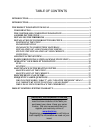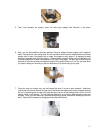
9
CHIMNEY
Your wood stove may be hooked up with a prefabricated or masonry chimney. If you are using a prefab
chimney, it must comply with S-629 standards; therefore it must be approved for up to 2100
o
F (650° C). It is
extremely important that it be installed according to the manufacturer's specifications.
If you are using a masonry chimney, it is important that it be built in compliance with the specifications of the
National Building Code. It must be lined with refractory bricks, metal or clay tiles sealed together with fire
cement. (Round flues are the most efficient).
The interior diameter of the chimney flue must be identical to that of the stove smoke exhaust. A flue which
is too small may cause draft problems, while a large flue favors rapid cooling of the gas, thus enhancing
creosote build-up and the risk of chimney fires. Current practice requires that the area of the chimney flue do
not exceed the stove exhaust area by more than 35%. For a round pipe, 35% of the area represent
approximately 1” (25 mm) on the diameter. (ex: For a stove with an exhaust of 6”, the chimney flue should
not exceed 7” of diameter.) Note that it is the chimney and not the stove which creates the draft effect; your
stove's performance is directly dependent on an adequate draft from your chimney.
The following recommendations may be useful for the installation of your chimney:
1) It must rise above the roof at least 3' (0,9 m) from the uppermost point of contact.
2) The chimney must exceed any part of the building or other obstruction within a 10' (3,04 m) distance
by a height of 2' (0,60 m).
3) Installation of an interior chimney is always preferable to an exterior chimney. Indeed, the interior
chimney will by definition be hotter than an exterior chimney, being heated up by the ambient air in
the house. Therefore the gases which circulate will cool more slowly thus reducing the build-up of
creosote and the risk of chimney fires.
The draft, which is created by the tendency for hot air to rise, will be better with an interior chimney.
4) You must not install more than one heating unit per chimney flue.
5) The use of a fire-screen at the extremity of the chimney requires regular inspection in order to
insure that it is not obstructed.
STEP BY STEP INSTALLATION OF YOUR CHIMNEY
Note : The way to install your chimney may vary from one chimney manufacturer to another. The
instructions contained in this manual are based on the recommendations of chimney manufacturers whose
products are sold at many Canadian retailers of wood stoves and related heating accessories.
WALL SUPPORT SYSTEM
If your chimney must rise along an outside wall, you need to connect it to your stove through an adjacent wall.
For this type of installation, the following items are normally required :
Chimney
• Suitable lengths of chimney (enough to go up to your roof)
• An adjustable wall support
• A wall thimble
• An adequate number of wall bands (one for every 8 feet of chimney, excluding the roof portion)
• A stove pipe adapter
• One insulated tee & plug
• A chimney cap.
• Roof guys (if required)


















